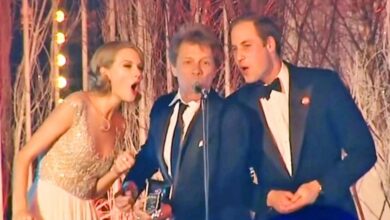Haven’t heard anyone sound similar to him. He is really unique.
On November 25, 2002, Audioslave delivered a performance of “Like a Stone” in an intimate setting that allowed for a profound connection with the audience, highlighting their distinctive brand of alternative rock. The showcase emphasized Chris Cornell’s powerful and soulful vocals, immersing listeners in the song’s haunting introspection. Paired with Tom Morello’s unique guitar style—utilizing experimental techniques to craft a singular soundscape—the song unfolded with raw energy that captivated viewers. Morello’s inventive guitar work, intertwined with the intricate rhythms provided by Tim Commerford on bass and Brad Wilk on drums, added depth to the piece, creating an immersive experience that defined the band’s sound.
“Like a Stone” emerged as one of Audioslave’s most acclaimed tracks, resonating with listeners through its thoughtful lyrics and memorable melody. Cornell’s voice soared, leaving an indelible impression as he sang about longing and reflection, while the music swelled around him with a powerful dynamic range. Formed in 2001, Audioslave united members from two iconic bands, blending influences from Soundgarden and Rage Against the Machine to create a supergroup with a unique sound. This fusion of different musical styles allowed them to produce music that balanced hard-hitting rock elements with soulful, introspective lyrics, setting them apart in the music landscape.
The success of “Like a Stone” extended beyond this performance, gaining substantial radio play and charting internationally. Its enduring popularity attests to the band’s exceptional songwriting and performance capabilities. For Cornell, this song and performance represented a deeper exploration of themes central to his musical identity, with existentialism, love, and loss woven into the lyrics. His voice became an emblem of the era’s grunge movement and a symbol of raw emotion, earning him both critical acclaim and a dedicated fanbase.
Tom Morello’s innovative guitar techniques infused Audioslave’s music with a distinctive edge, pushing the boundaries of rock guitar sounds. His unconventional yet masterful approach created an atmosphere that complemented Cornell’s emotive vocals and allowed Audioslave to stand out. Meanwhile, the rhythm section, anchored by Commerford and Wilk, provided the pulse and drive behind the band’s music, giving the song structure and intensity while enhancing its emotional impact.
This performance marked a pivotal moment for the band, cementing their place in rock history and showcasing their collective talent. The chemistry on stage created an emotional resonance that stayed with fans long after the song ended, epitomizing Audioslave’s powerful live presence.



